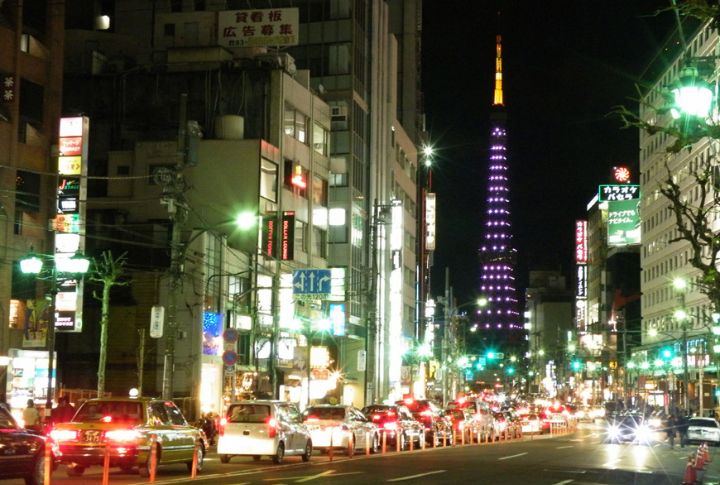
Japan is generally seen as a safe place, but there are some spots that can be risky for travelers. However, these spots are still full of life and offer unforgettable experiences. If you’re interested in knowing where to be extra cautious in Japan, keep reading!
Fujinomiya, Shizuoka

This charming city is located at the base of Japan’s iconic Mount Fuji. While it’s a popular destination to witness breathtaking views and outdoor activities, Mount Fuji is susceptible to volcanic ash fall. The beautiful scenery can become hazardous if you are unaware of the latest volcanic activity updates.
Sakurajima, Kagoshima

Sakurajima is a stunning volcanic island with lovely views and unique hot springs. However, it also has one of the most active volcanoes in the world, with constant eruptions that can send ash plummeting down onto the surrounding areas. Residents have been evacuated multiple times because of volcanic activity.
Kabukicho, Tokyo

Brimming with neon lights, bars, and entertainment, Kabukicho is Tokyo’s vibrant red-light district. It’s an intriguing place to experience the city’s nightlife, but it can also be somewhat dubious. Touts may attempt to entice you into different establishments, some of which may not be completely trustworthy.
Niseko, Hokkaido

Famous for its powder snow, Niseko offers world-class ski resorts. Nevertheless, it can be dangerous for those who venture off-piste without proper knowledge or equipment. It’s essential to check avalanche forecasts and stick to marked trails when hitting the slopes. Great slopes come with significant risks, especially when it comes to avalanches.
Okinawa Island

A tropical paradise with beautiful beaches and unique culture–that’s Okinawa! As attractive as this island is, it is also vulnerable to typhoons, especially during late summer and early fall. Heavy rain, strong winds, and dangerous conditions sometimes accompany these storms. Visitors should be prepared for sudden changes.
Aokigahara, Yamanashi

While it is a popular spot for hikers, it is also known for being associated with many suicides. Aokigahara, referred to as the “Suicide Forest”, is located at the base of Mount Fuji. It is famous for its dense woods and tragic history. The forest’s twisting paths and dense trees make it easy to get lost.
Shinjuku, Tokyo

Shinjuku is a crowded district in Tokyo, recognized for its tall buildings, shopping, and vibrant nightlife. It’s a generally safe area, but there are some shady spots, especially at night. You might come across street performers, touts, and people trying to exploit tourists. Stay in well-lit areas and avoid any such interaction.
Daikiretto, Nagano

This magnificent mountain pass provides surreal views while offering challenging hiking trails. However, the trails can be steep and treacherous. Dangerous situations might also arise from abrupt changes in the weather. If you’re not an experienced hiker, it’s best to stick to more accessible paths.
Shimane, Honshu

A beautiful location that enables one to enjoy nature, Shimane is also home to wild boar populations. More often than not, these creatures keep to themselves but can be dangerous if startled or cornered. If you plan to hike in secluded areas, it’s important to stay vigilant and avoid making excessive noise.
Miyake-jima, Tokyo

Miyake-jima, a volcanic island in the Izu archipelago, is characterized by its persistent degassing and frequent eruptions. Sulfuric gases can pose health hazards if you’re not cautious. Although visiting is generally safe, pay attention to air quality warnings and follow guidelines from local authorities
Ikebukuro, Tokyo

Stay alert in this area! Ikebukuro is another buzzing district with plenty of shopping, dining, and entertainment options, but it also attracts petty crime, especially after dark. Be mindful of your surroundings, keep an eye on your belongings, and be cautious with your phone or camera in such crowded places.
Shinjuku Gyoen National Garden

Shinjuku Gyoen National Garden is a stunning sanctuary in the middle of Tokyo, ideal for a tranquil getaway. It is well-known for its arcades and family outings at the aquarium. However, petty theft can happen there, too, especially during busy times of the year, so exercise caution.
Soemon-cho, Osaka

It’s an enjoyable place to immerse yourself in the local culture, but it can also be overwhelming. At Soemon-cho, you may come across pushy touts attempting to draw you into establishments with questionable reputations. If you’re not interested, simply keep walking and don’t engage.
Roppongi, Tokyo

Historically linked to organized crime, Roppongi remains a spot where caution is advised. In recent years, incidents like drink-spiking and tourist scams have prompted travel warnings. Therefore, tourists should stay on main streets, avoid back alleys, and be wary of overly enticing offers.
Mount Tanigawa

Often referred to as the “Mountain of Evil,” Mount Tanigawa is notorious for its perilous climbing conditions. Despite its modest height of 6,486 feet, its treacherous terrain and unpredictable weather have claimed over 800 lives in the past century, more than twice the number lost on Everest.

